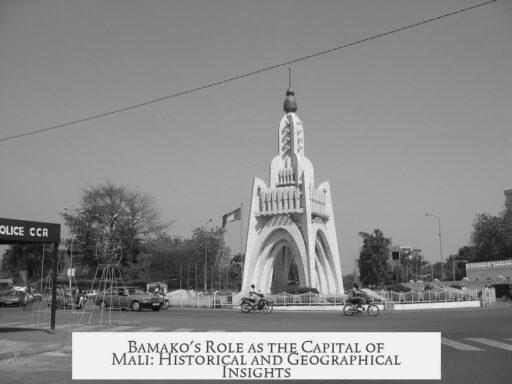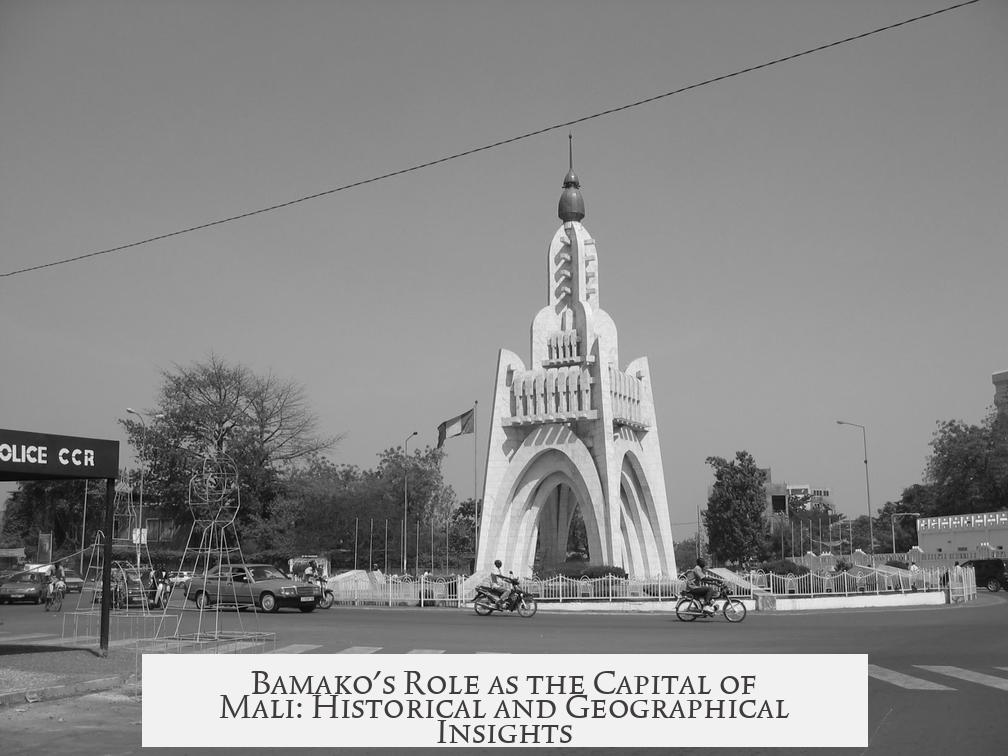Bamako is the capital of Mali because of strategic colonial decisions made during French rule. The choice stems from its advantageous location and better connectivity compared with older regional centers. Historically, cities like Gao and Timbuktu were more prominent, but changes in power and geography shifted importance toward Bamako. Key factors include its position on the Niger River, proximity to rail infrastructure, and improved control for French administrators.
During the pre-colonial era, Gao served as the capital of the Songhay Empire. It was a leading political and economic center until Morocco invaded in 1591, capturing the city and causing the empire’s collapse. Administrators then moved the capital to Timbuktu, famed for its wealth, scholarship, and mystique in Western imagination. Europeans prized Timbuktu as an emblem of African riches and knowledge. However, by the 19th century, Timbuktu’s prominence had faded.
French explorers and scholars in the early 1800s described Timbuktu as less grand than previously thought. For example, René Callié, who visited in 1828, noted the city’s modest architecture rather than its legendary wealth. By the late 19th century, when France formally established control over the territory as French Sudan, no older towns like Gao or Timbuktu matched Bamako’s urban development. Bamako had become a growing settlement with a practical location for new infrastructure.
The French colonial expansion focused heavily on transport and communication. In 1879, the French built a fort near Bamako to secure their presence. The primary aim was to develop a railway system connecting the Atlantic coast at Dakar to the Niger River. The Dakar-Niger railway project turned Bamako into a critical junction because it lay just east of the Sotuba rapids, marking a navigational breakpoint on the river. This location facilitated transport by both rail and boat, unlike other cities hampered by natural obstacles or weaker connections.
Initially, the colonial administration operated from Kayes, located on the Senegal River. However, Kayes was too remote from the central Niger Basin where French interests were rapidly expanding. Communication difficulties with the Senegal region and concerns about autonomous military actions complicated colonial governance. These problems prompted officials to prefer a capital closer to key operational zones to exert tighter control.
Bamako’s superior transport links—both via the river and the railway—allowed better coordination for administration and troop movements. The colonial government moved the capital there around 1908 to improve governance efficiency. This relocation ensured the capital was reachable by train and riverboat, speeding communication and supply lines. Bamako’s position enabled French authorities to monitor and manage the interior of French Sudan more effectively than from formerly dominant cities or the distant Kayes.
| City | Historical Role | Condition by Late 19th Century | Strategic Advantage |
|---|---|---|---|
| Gao | Capital of the Songhay Empire | Declined after Moroccan invasion in 1591 | Less accessible after conflict |
| Timbuktu | Famous for wealth and scholarship | Reduced in importance; modest infrastructure | Remote, less connected by modern transport |
| Bamako | Small settlement growing by late 19th century | Strategically located on Niger River | Near railway terminus and navigable river section |
| Kayes | Initial colonial administrative center | Located on Senegal River but distant from Niger | Poor communication with French Sudan interior |
The decision to name Bamako the capital reflects colonial priorities. French officials needed a location that enabled closer oversight of their new colony, effective transport, and linkages between the coast and interior. The natural geography of the Niger River, the arrival of railroads, and the decline of older capitals all contributed to Bamako’s rise.
Today, Bamako remains Mali’s largest city, central to its political and economic life. Its status as capital continues to trace back to French colonial infrastructural planning and administrative strategy more than pre-colonial prestige.
- Bamako was chosen for its strategic location on the Niger River, just east of navigable rapids.
- French colonial authorities prioritized transport links; Bamako was connected by rail and river.
- Older capitals like Gao and Timbuktu had declined by the late 19th century.
- Initial colonial administration from Kayes was distant and poorly connected.
- Bamako’s capital status reflects French efforts to tighten control and improve communication.
Why did the French choose Bamako over Gao and Timbuktu as the capital?
Gao and Timbuktu had declined by the late 19th century. Bamako’s location near the Niger River allowed better train and boat connections. The French wanted a capital with good transport links for administrative control.
What role did the railway play in Bamako becoming the capital?
The French planned the Dakar-Niger railway to connect the coast to the Niger River. Bamako was chosen as a train terminal site because it was just east of the Sotuba rapids, making it a strategic transport hub.
Why was the capital moved from Kayes to Bamako?
Kayes was far from the main frontier and had poor communication with Senegal. Bamako was closer, with better transport by train and river, allowing France to control colonial affairs more effectively.
How did military concerns influence the choice of Bamako as capital?
French officials worried that military officers in the region were acting independently of Paris. Moving the capital to Bamako helped centralize control over the military and colonial administration.
Was Bamako a major city before becoming the capital?
By the 1880s, Bamako was not much larger than other towns but its strategic location made it ideal for colonial administration. It became the urban center after the French established their presence.




